Greetings, Fabulistas,
This week’s blog post features an interview with VIP, fellow Fabulista, and our very first Resident Expert feature: Toma Clark Haines, our expert in Vintage & Antiques ! Toma, aka “The Antiques Diva” has years of experience in this fascinating world.
I sat down with Toma and asked her to share her story. Read our conversation and get to know Toma and glean a few nuggets of incredible advice from The Antiques Diva herself!
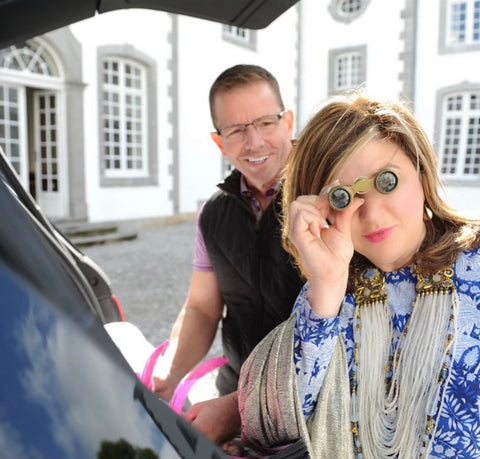
How it Started…
Robin: Toma, can you tell us a little bit about what influenced your interest in vintage and antiques?
Toma: From childhood, my mother did not have much money, but what she lacked in dollars, she made up for with incredible taste. We would often go to a garage sale, or a flea market where she would pluck out a magnificent, hidden thing that nobody else had noticed. At home, she would find the perfect place to put it…this is what really started to transform our living space and the way I looked at furniture. Back then, most people didn’t pay attention to her choices in furniture, but now, having an eye for vintage is immensely popular. My mom was ahead of her time. Her knack for adapting eclectic decor has definitely influenced my love for antiques.
From a young age, I also learned to appreciate the unique and one-of-a-kind stories these treasured antiques carried— as well as discovering the value of second hand and repurposed pieces. As an adult, this translated into learning that antiques were often of better value than similar new items, because they tend to retain their value longer.
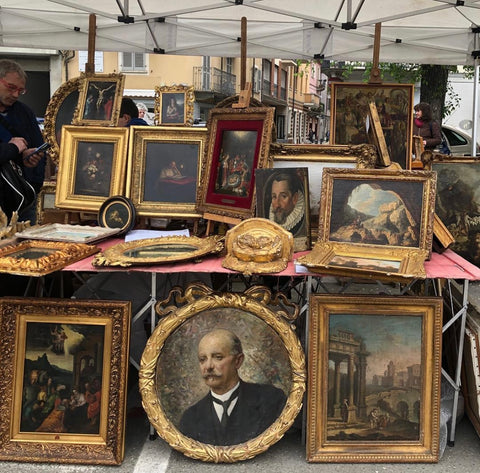
Robin: I know everyone would like to know a little more about your background. Would you please share that with us?
Toma: Believe it or not, my background is in English literature. You would think that it is a different world from vintage or antiques… that the two of them are disconnected…but actually, when you study literature, you study symbols and the meanings of things. You are simultaneously learning about history, as well as learning how to understand a painting or an object.
After college, when I was 25, I moved overseas to Paris… and on the very first weekend, I found myself shopping at the Paris Flea Market… the rest is history! I had always heard about how special the Paris Flea Market was, and going there myself…it changed my life. I eventually became obsessed and shopped every flea market in France, and then all around Europe! That is how I started my company thirteen years ago. I was collecting vintage and antiques everywhere I went…and before I knew it, I started blogging about buying antiques, and my readers eventually pushed me to take them on buying tours. My company is now the only approved official guide of the Paris Flea Market. It’s funny how things come full circle. I often think to myself…what a wonderful journey it has been. My marriage brought me to Paris from Oklahoma, where I am originally from, and after living in Paris for five years, I have since lived in Amsterdam, Berlin, and now the beautiful city of Venice.
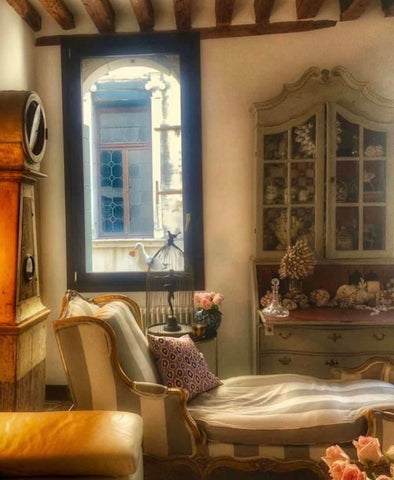
Robin: How did you learn about antiques and how did you become an expert in your field?
Toma: I gained expertise through a very hands-on experience; by going to the markets, exploring, speaking to dealers, and working to understand the meaning of these objects. As a literature student, I translated my knowledge of symbols, and identifying meanings into objects. For instance, if you look at a painting with an apple on it, one of the ways to decipher it might be that the apple is a symbol of fertility. The same holds true for furniture.
I would see a wonderful fluted column on a chair, and would discover that it is from Louis XVI’s period. This would tell me that he was historically inspired by Pompei, because the ruins were found at his time. I was able to string together these threads of history because I am first and foremost, a reader… a reader of books, of objects, and of people. I am always looking for signs and symbols and how to interpret them. Of course, my love of travel, and the studying of antiques from different periods around the world helped me gain a better understanding of them.
Toma’s Product Recommendations
Robin: People often confuse the terms “vintage” and “antique”. What defines them and how do you differentiate between them?
Toma: “Antiques” need to be at least one hundred years old. The term “vintage”, on the other hand, has had varied definitions over time and is subject to debate. For it to be called vintage, some say that an object needs to be fifty years old while others say twenty years is enough for it to be called vintage. Personally, I like to go with twenty years. Some may consider something twenty years old “second-hand” instead of “vintage”, but second-hand still has a very valuable place in the industry. There are often designer pieces that have a great look and still hold tremendous value. These items can add distinctive looks and create the perfect balance in your room. Whether the pieces are vintage, antiques or second-hand, each can add wonderful elements into your home while giving it a unique look that is all your own.
Personal style and taste.
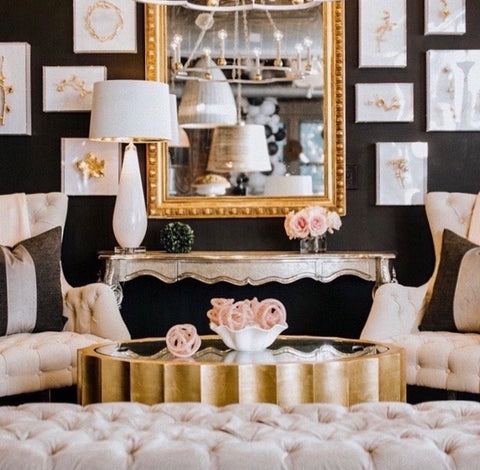
Robin: Toma, you travel so much, and are exposed to everything. Do you have a personal favorite period or style of antiques?
Toma: My personal style is all about the mix, and my house reflects it. People often comment that my interiors speak a contemporary language even though I have a lot of antiques mixed in.
I love the 18th Century. I like the Rococo phase of Louis XV and Louis XVI , and slightly thereafter, there are objects from King Gustav’s reign in Sweden from the Gustavian period. If I had to choose, I tend to lean towards Gustavian. I personally collect mostly Swedish and French antiques, with some Spanish antiques thrown in for good measure. Almost every item in my home is antique with the exception of some well chosen contemporary furniture, like my white leather couch, my black leather bed, and my Ikea cabinets that are behind my 18th century desk. Yes, I did say Ikea!
Robin: You seem to have embarked on a long, and beautiful journey from the time you started. How has your love for antiques evolved over time?
Toma: I am currently in a smaller home in Venice, as compared to my home in Berlin where I had three kinds of spaces filled with objects. I have gone more minimal over time and my current home is nothing but traditional.
Over time, I have recognized that LESS is more…I want to see antiques with more air around them, I want them to have space to breathe, and for people to be able to see and appreciate the object in all its beauty. So, I am careful when I decorate. I do have a few clusters of collections, while mostly trying to space out my collection. That’s how my personal aesthetic has evolved and that’s also how antiques become modern…when you give them space.
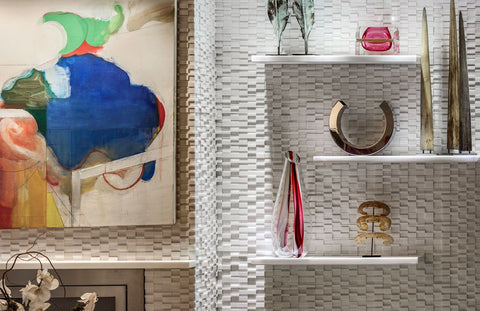
Toma is always an inspiration to me. Keep an eye out next week for part two of my conversation with The Antiques Diva, where I take a deeper look into her life and endeavors. In the meantime, check out Toma’s tips and top product recommendations from our exclusive collection of Vintage and Antique Accessories.
Be sure to follow Toma on Instagram if you like taking virtual tours of flea markets and antique dealers, or want to gain a better understanding on how to source and style vintage and antiques for your home.
XOXO,
Robin





